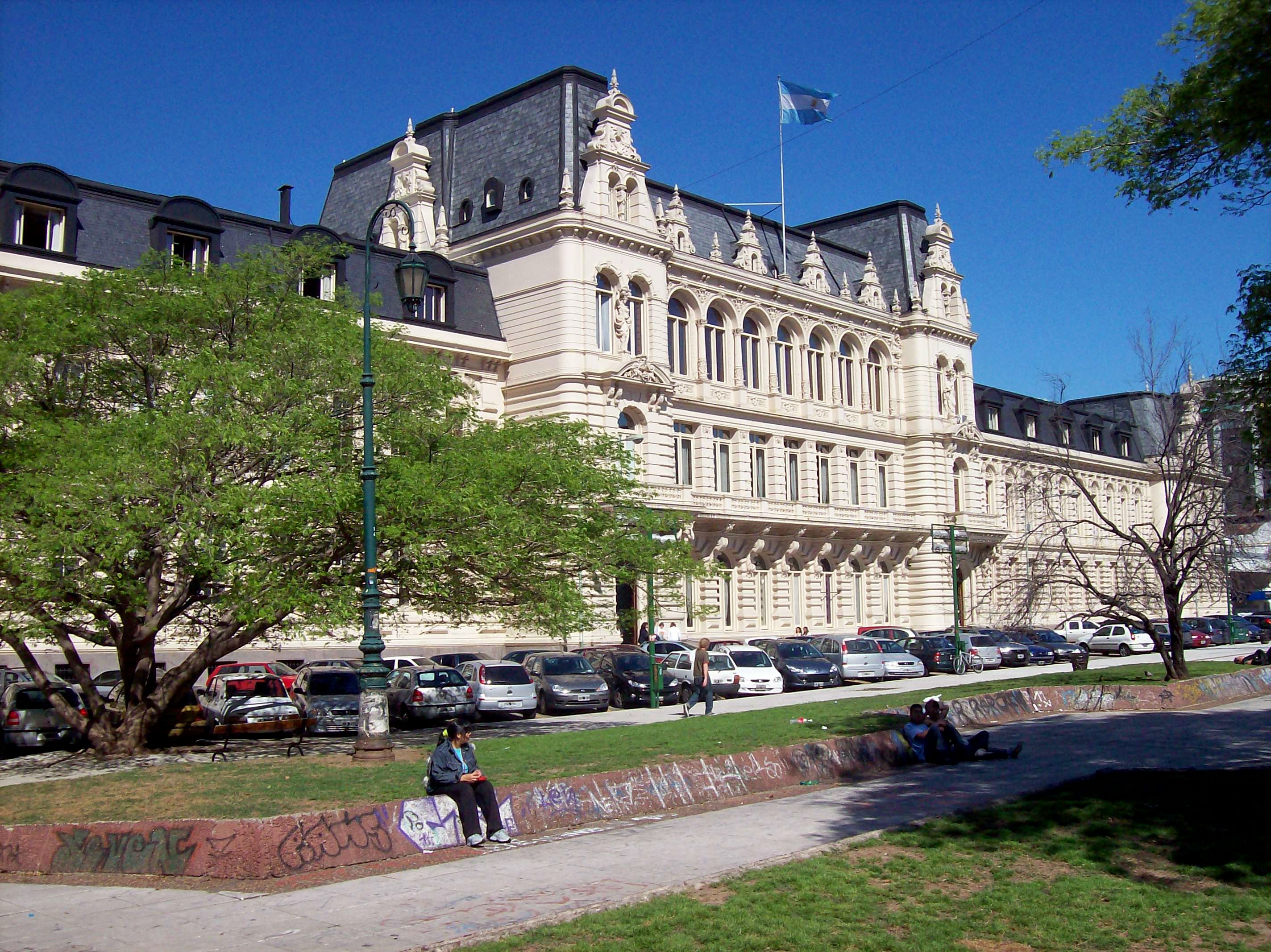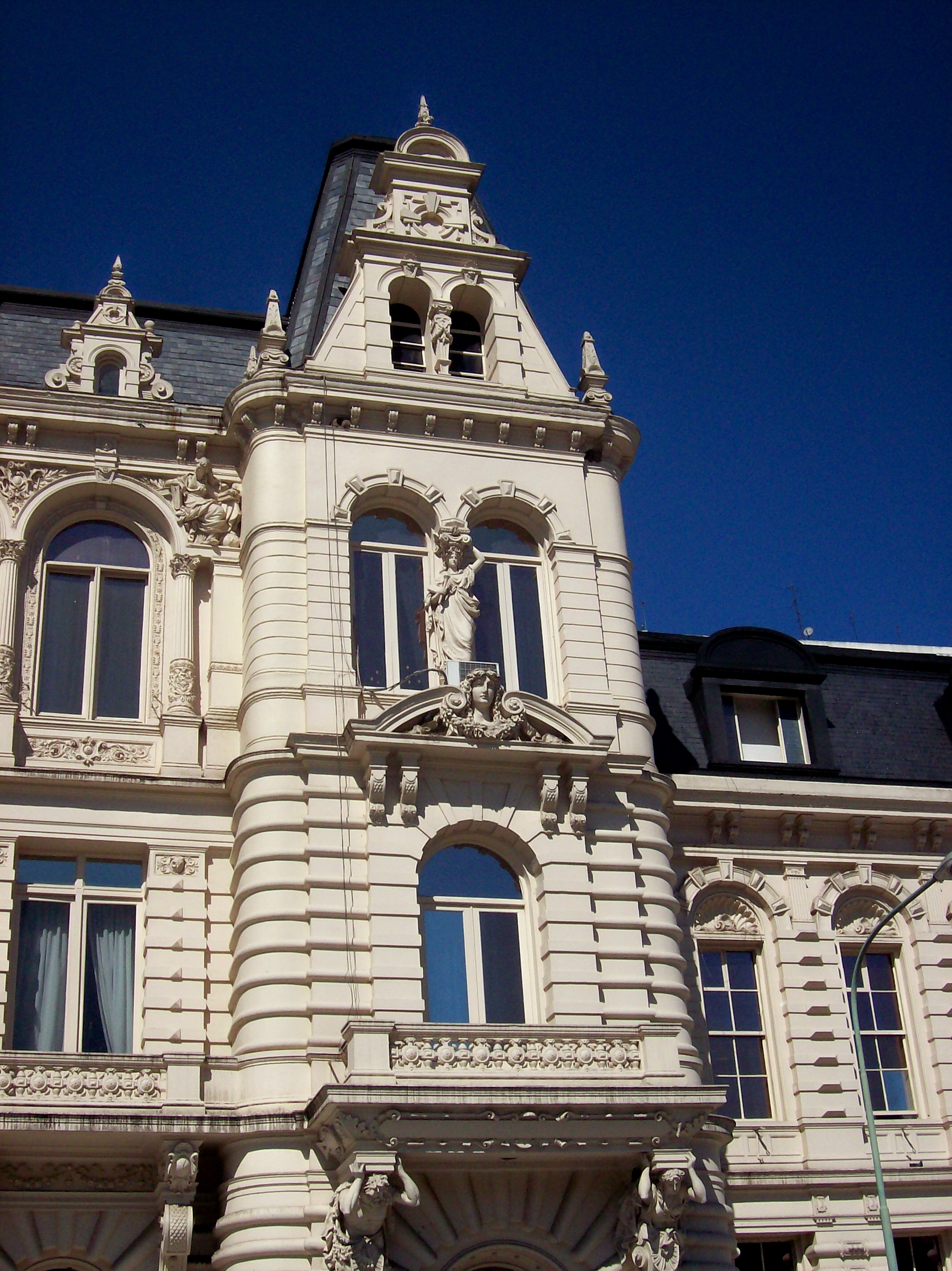Pizzurno Palace on:
[Wikipedia]
[Google]
[Amazon]
 The Sarmiento Palace, commonly known as the Pizzurno Palace, is an architectural landmark in the Recoleta section of
The Sarmiento Palace, commonly known as the Pizzurno Palace, is an architectural landmark in the Recoleta section of
 A will left by a local heiress, Petronila Rodríguez de Rojas, stipulated that her roughly lot in uptown Buenos Aires be used for an educational and charitable compound to include a church, an old-age asylum and a girls' school for no less than 700 pupils. Her 1882 death accordingly left the property to the city, which commissioned
A will left by a local heiress, Petronila Rodríguez de Rojas, stipulated that her roughly lot in uptown Buenos Aires be used for an educational and charitable compound to include a church, an old-age asylum and a girls' school for no less than 700 pupils. Her 1882 death accordingly left the property to the city, which commissioned
 The Sarmiento Palace, commonly known as the Pizzurno Palace, is an architectural landmark in the Recoleta section of
The Sarmiento Palace, commonly known as the Pizzurno Palace, is an architectural landmark in the Recoleta section of Buenos Aires
Buenos Aires ( or ; ), officially the Autonomous City of Buenos Aires ( es, link=no, Ciudad Autónoma de Buenos Aires), is the capital and primate city of Argentina. The city is located on the western shore of the Río de la Plata, on South ...
and the location of the Argentine Ministry of Education.
Overview
 A will left by a local heiress, Petronila Rodríguez de Rojas, stipulated that her roughly lot in uptown Buenos Aires be used for an educational and charitable compound to include a church, an old-age asylum and a girls' school for no less than 700 pupils. Her 1882 death accordingly left the property to the city, which commissioned
A will left by a local heiress, Petronila Rodríguez de Rojas, stipulated that her roughly lot in uptown Buenos Aires be used for an educational and charitable compound to include a church, an old-age asylum and a girls' school for no less than 700 pupils. Her 1882 death accordingly left the property to the city, which commissioned German Argentine
German Argentines (german: Deutschargentinier, es, germano-argentinos) are Argentines of German ancestry as well as German citizens living in Argentina. They are descendants of Germans who immigrated to Argentina from Germany and elsewhere in E ...
architects Carlos Adolfo Altgelt and his cousin Hans Altgelt to design the requisite school.
Work began in 1886Mysteries of Buenos Aires, the creation of the Pizzurno Palace, http://misteriosabsas.blogspot.com/2012/03/palacio-pizzurno.html on the building which, per Mrs. Rojas' wishes, would include extensive museum and library facilities, as well. The building's design was eclectic, inspired by Second Empire architecture
Second Empire style, also known as the Napoleon III style, is a highly eclectic style of architecture and decorative arts, which uses elements of many different historical styles, and also made innovative use of modern materials, such as i ...
influenced by both French
French (french: français(e), link=no) may refer to:
* Something of, from, or related to France
** French language, which originated in France, and its various dialects and accents
** French people, a nation and ethnic group identified with Franc ...
and German Renaissance Revival architecture
Renaissance Revival architecture (sometimes referred to as "Neo-Renaissance") is a group of 19th century architectural revival styles which were neither Greek Revival nor Gothic Revival but which instead drew inspiration from a wide range o ...
. It was completed in 1888, and the Petronila Rodríguez de Rojas School was inaugurated in 1893. The majestic landmark was soon earmarked for use as government offices, however, and the National Education Council was installed there in 1903; the National Education Council (since dissolved) administered Argentina's system of national secondary schools. The building was rebaptized as the Sarmiento Palace in honor of former Education Minister and President Domingo Sarmiento
Domingo Faustino Sarmiento (; born Domingo Faustino Fidel Valentín Sarmiento y Albarracín; 15 February 1811 – 11 September 1888) was an Argentine activist, intellectual, writer, statesman and the second President of Argentina. His writing sp ...
, who made " the education of a sovereign people" a policy centerpiece during his prosperous 1868-74 tenure.
The building's location facing leafy Rodríguez Peña Plaza created an urban oasis
An urban oasis is a public open space, park, or plaza which is located in between buildings or formed by surrounding buildings in an urban setting. It can exist in any kind of culture. There are various sizes of urban oases. Central Park, Fred ...
in the otherwise bustling Barrio Norte section of the upscale Recoleta ward. A lot immediately to the south of the building was converted into Petronila Rodríguez de Rojas Plaza (a playground) as a belated homage to the civic-minded lady during the 1950s (as was a primary school in the Parque Chas
Parque is the Galician, Portuguese and Spanish word for "park", and may refer to:
* Parque (TransMilenio), a metro station in Bogotá, Colombia
* Parque (Lisbon Metro), in Portugal
* Parque (Santurce), a subbarrio in San Juan, Puerto Rico
* Jim ...
neighborhood, in 1934).
The last dictatorship, which dissolved the Education Council in 1978, transferred the Ministry of Education to the building in 1980. Still officially known as the Sarmiento Palace, the building is popularly known as the Pizzurno Palace for the side street built facing it, which was renamed in honor of pedagogian and local primary school system pioneer Pablo Pizzurno
Pablo Pizzurno (July 11, 1865 - March 24, 1940) was an Argentinian educator who laid the foundations of the national primary education.
Education and contributions
Pizzurno received his master's degree and began teaching in the Normal School i ...
, following his death in 1940.
References
{{DEFAULTSORT:Pizzurno Palace Education in Argentina Libraries in Argentina Palaces in Buenos Aires Government buildings in Argentina National Historic Monuments of Argentina School buildings completed in 1888 Renaissance Revival architecture in Argentina